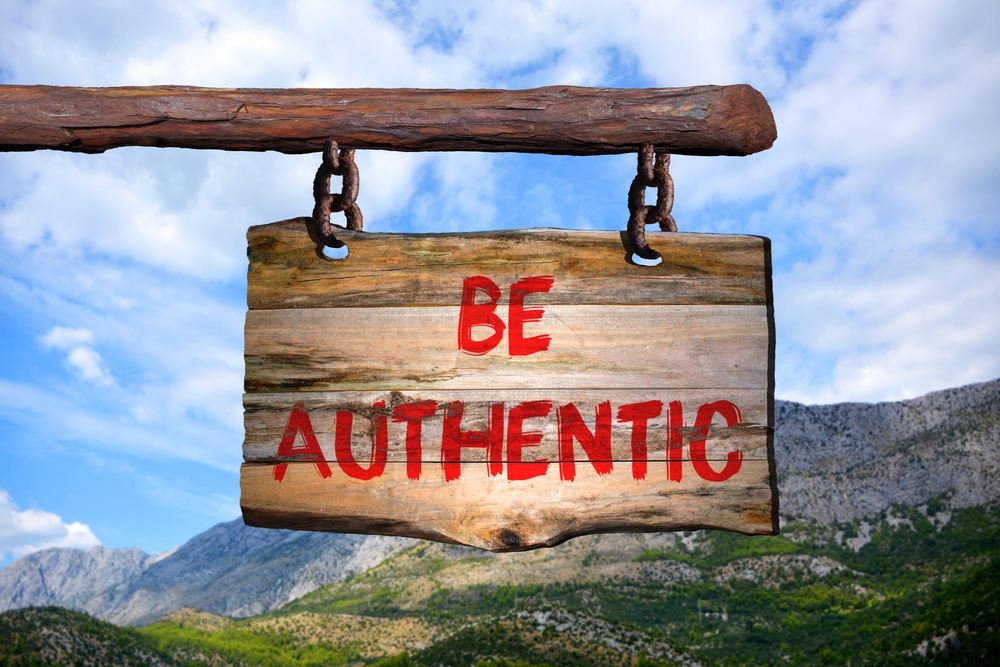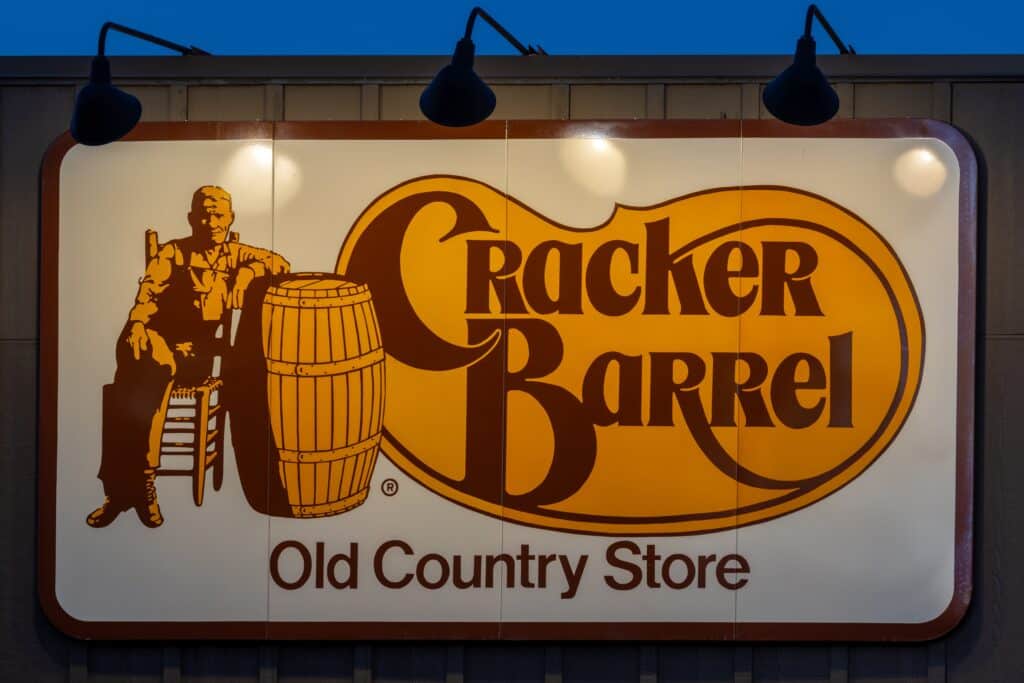
A survey of 15,000 consumers from 15 countries across the globe found that trust is just as important as price and value when deciding to buy a product or service, according to the 2025 Edelman Trust Barometer.
Globally, there is a decrease in trust for governments, media, and institutions, with an increase in trust for brands. “[C]onsumers are looking to brands they trust to provide stability in their lives” in times of social, economic, and political disruption. “Trust in brands has soared in recent years, with brands now more trusted than any traditional institution we study.”
To be a trusted brand today is to have purpose beyond profit and to authentically show up in culture and community.” (Emphasis added.)
This article will examine how brands can build authenticity without getting caught in the trap of “AI slop.”
– To watch it as a 10-min video
– To listen to it as a 10-minute podcast
– To dig deeper and learn more, subscribe to our Newsletter
Brand authenticity is the honest expression of the brand’s identity, purpose, and values. It grows when brand promises and brand values are aligned with words, actions, products, and services.
Brand authenticity means being true to your vision, values, and purpose. Authenticity builds trust, the most valued quality. Brands need to discover and stay true to what they authentically stand for.
Staying true to brand identity is another important aspect of brand authenticity. Changing and restoring the Cracker Barrel logo is about more than an image – it is about being authentic and true to one’s own identity, history, the heart and the soul of the very essence of a brand. Taking it away is to take away the humanity behind it.

Vision, values, and purpose. When a person is authentic, they live their lives according to core values and principles. Brands are much the same, they need core values and principles, and a purpose beyond selling more goods or services. Authentic brands need to stand for something.
Brands can discover – or re-discover – their authentic purpose, vision, and values through a brand audit. An audit can measure whether brand strategies, brand messaging, and brand voice are aligned with core values, and test whether target audience perceptions of the brand match expectations. The goal is for each brand to be its own unique, authentic self.
When a brand can both “talk the talk” and “walk the walk,” it is regarded as authentic and builds brand loyalty with its target audience.
Social brands and authenticity. For brands that rely on social media marketing, the challenge of maintaining brand authenticity is especially acute. These “social-first” brands, as a Deloitte article calls them, rely more on authenticity and trust to build connections.
Social-first brands “achieve an average year-over-year revenue increase of 10.2% as a result of their social strategies,” according to Deloitte. They are eight times more likely than “low social maturity” brands to exceed revenue goals “by 25% or more.”
“Social-first brands recognize the importance of authenticity – demonstrated by connecting brand identity with words and actions,” the authors write. They are “2.5 times as likely” to prioritize building trust and humanizing their brands than low social maturity brands.
Instead of simply gathering “likes” and “follows,” these social-first brands build connection and engagement tailored to specific social media communities. Social-first brands boost trust and engagement by listening and responding to the needs and preferences of their customers. They communicate in a straightforward and transparent way.
Consumers pushback on AI. In late 2024, Coca-Cola used AI to recreate a beloved 1990s “Holidays are Coming” television ad featuring polar bears. The ad was well-received at first, but praise turned to rage when consumers detected the use of AI generated video. Consumers reported a lack of warmth or human touch in the AI images. The issue may go even deeper.
A 2024 Forbes report found that half of consumers agree that AI content is a “turn off” and that it makes them “apprehensive.” More than half of consumers say they can “easily” spot AI content, particularly younger ones. The Forbes authors conclude, “AI is a useful tool to start with[,] but experts suggest it takes a human, personal touch to make content resonate.”
AI isn’t equipped to reproduce authentic human-to-human connections. Humans must control content creation for clients and consumers.
The risk of letting AI take over. “Marketers are growing more comfortable with letting generative artificial intelligence assume the voices of their brands”, the Wall Street Journal reported in May 2025. The authors quote Noah Brier, co-founder of AI consulting firm Alephic, as saying, “You’re going to relinquish control. It makes too much sense.” And the Financial Times has reported that the age of the “AI influencer” is already upon us.
The truth is that, when everyone has access to the same tools, AI enabled branding will make brands more and more alike. AI is great for tasks like brainstorming ideas, doing research, and streamlining production. But using AI in the wrong ways creates risk that brands will be seen as inauthentic and lacking human connection. That can cause consumer backlash and loss of trust.
Many brands are using AI to level the competitive playing field by automating tasks and increasing efficiency. [1] That’s a growing reality, not a problem. Problems arise when brands try to use AI hyper personalization as a substitute for human connection and authentic voice. This undermines authenticity and brand trust.
People can quickly tell when a brand is being insincere or just following a trend. Replacing humanity with AI risks the kind of consumer backlash that Coca-Cola’s AI generated polar bears faced. Your brand’s clients and customers are becoming ever more sophisticated at detecting AI generated content, and it’s making at least half of them “apprehensive”, even “allergic” to AI generated content.
What builds brand loyalty is more than mere functionality of a product or service. To stand out in a world that values authenticity, originality, and trust, nurture the relationship with a brand’s target audience based on shared values, vision, and the lasting bond created by using products and services.
Let AI do the routine and supportive work. Give to Caesar what belongs to Caesar: Let humans do the creative work of relating to humans.
How to build authenticity and distinguish your brand from a sea of chatbots and AI generated content? Starting with decoding brand DNA to get clarity about the fundamentals that hold up your brand. Then develop a comprehensive brand strategy, to have a clear division of labor regarding how humans CONTROL – not just “stay in the loop” – in content creation, brand messaging, and developing an authentic and unique brand persona. Humans set the tone, AI performs.
This creative and personalized work of connecting person to person should ALWAYS be human’s responsibility. The purpose of using AI is to free humans from drudgery so they can evolve to be the most creative selves in the upcoming Second Renaissance.
To maintain customer confidence, brand authenticity, and trust, organizations need an AI adoption strategy. [2]
Ask these questions and arrive at human-based solutions. Reinventing your brand for the AI age requires gaining clarity about your vision and purpose. It also requires thoughtful execution to leverage the power of AI without sacrificing authenticity and human connection. If you would like to learn more about brand authenticity in the AI age, please contact us.
Footnotes:
[1] The variety of tools available to produce different kinds of content can make AI a cost effective way to increase a brand’s impact, according to a Harvard Business Review (HBR) article. The authors report, for example, that investment firm the Vanguard Group used AI tools to increase ad conversion rates by 15%. And consumer brand Unilever used AI to help their customer service representatives “reduce their time-to-respond by 90%,” they say.
[2] Unfortunately, many companies lack an overall strategy to implement AI. Instead, AI tools are put in place “at the individual level,” reflecting “on-the-fly experimentation” – often without the knowledge of senior management, according to an article in HBR.
© Joanne Z. Tan, 2025, all rights reserved.
Please don’t forget to like it, comment, or better, SHARE IT WITH OTHERS!
– To stay in the loop, subscribe to our Newsletter
(About 10 Plus Brand: In addition to the “whole 10 yards” of brand building, digital marketing, and content creation for business and personal brands. To contact us: 1-888-288-4533.)
– Visit our Websites:
Phone: 888-288-4533
– Find us online by clicking or follow these hashtags:
